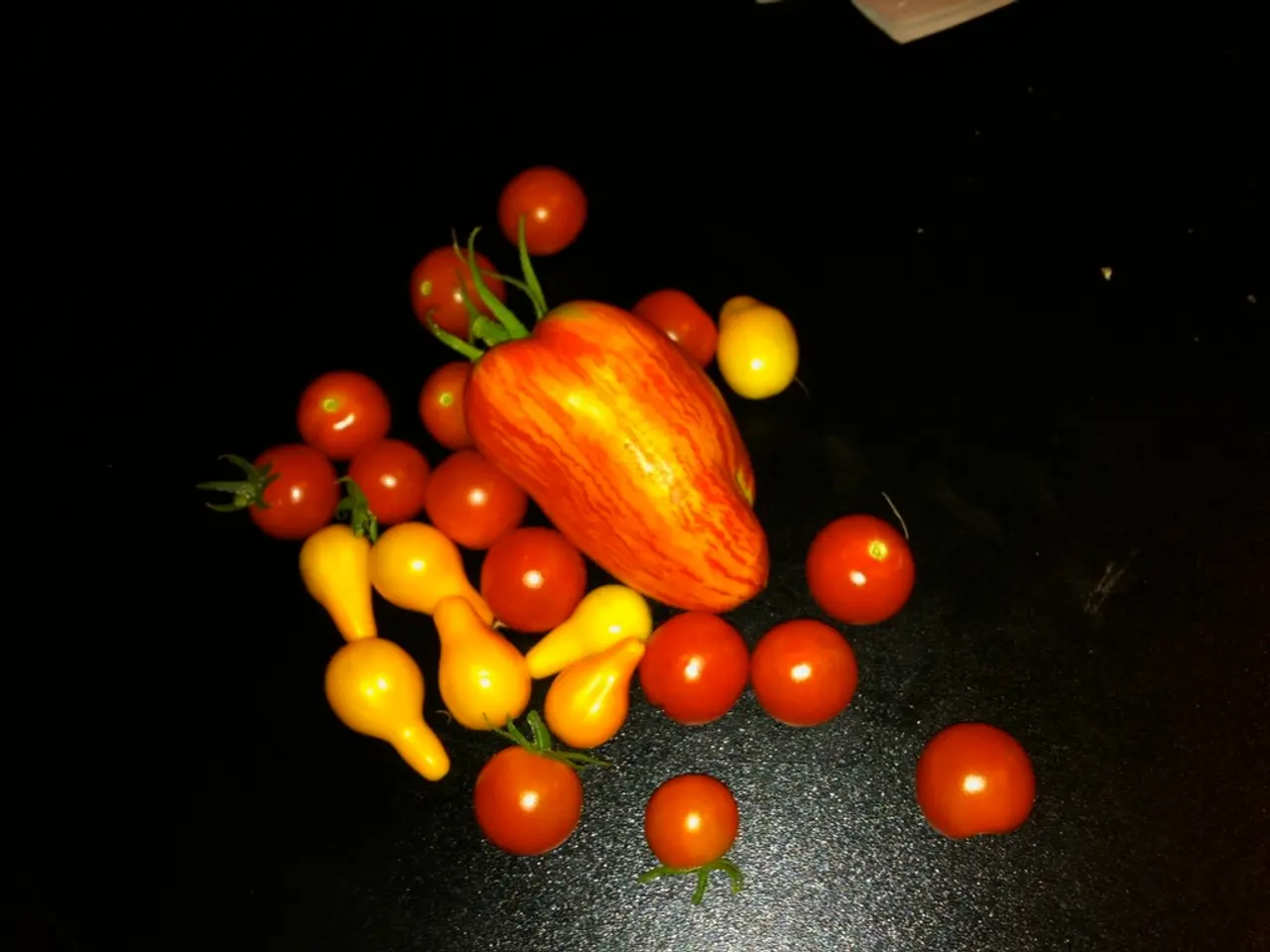Backyard Fruit Cultivation for Inexperienced Gardeners
Growing Fruit at Home: A Beginner's Guide
For those looking to start growing fruit at home, here are some key steps and considerations to help you get started.
1. Site Selection
Choose a sunny location with at least 6–8 hours of direct sunlight daily, essential for most fruit trees and bushes like apples, blueberries, and citrus. Ensure well-draining soil to prevent root rot; avoid waterlogged or heavy clay soils unless amended or raised beds are built, especially important for acid-loving plants like blueberries.
Consider soil quality by conducting a soil test to assess pH and nutrient levels. Most fruit trees prefer slightly acidic to neutral soils, while blueberries require acidic soil. Select a site with good air circulation to reduce disease risk, avoiding proximity to walls, fences, or other plants that block airflow. Provide enough space for mature tree size to prevent competition for nutrients and sunlight.
2. Choosing Fruit Types and Planting Techniques
Select beginner-friendly fruits such as strawberries, blueberries, dwarf citrus, or apple trees grafted on dwarf rootstock for easier maintenance and smaller space needs. Plant trees during their dormant season (autumn to spring) for best establishment, though container-grown plants can be planted later with care.
For bare-root trees, soak roots before planting, dig a hole about twice as wide as the root spread but with crown level to soil to avoid rot. Amend planting holes with organic matter like compost or manure if soil is poor, and mulch to retain moisture. Provide staking for young trees if planted in open ground to support growth.
3. Caring for Fruit Trees
Water consistently, especially in the first growing season; moisture is critical but avoid waterlogging. Prune regularly to maintain shape, improve airflow, and encourage fruiting; pruning timing depends on the fruit type. Fertilize with organic options to build soil fertility and support healthy growth. Use mulch to conserve soil moisture, suppress weeds, and gradually enrich soil.
4. Common Challenges and Solutions
Monitor your fruit trees regularly for pests and diseases, using organic controls when possible, such as encouraging beneficial insects and natural sprays. Address soil issues by amending poor soils and maintaining proper pH for specific fruit types (e.g., acidic soil for blueberries). For sensitive fruit trees like apples, plant in warm, sheltered sites and avoid late frost-prone locations. Remove grass or competing plants around the base to reduce nutrient and water competition during establishment.
Starting small and gradually expanding as experience grows allows beginners to manage their home fruit garden effectively, resulting in fresh, homegrown produce with patience and attentive care.
Common beginner-friendly fruit trees include apple, pear, plum, cherry, and peach trees. Use balanced fertilizers formulated for fruit trees, following recommended application rates and schedules. Choose a location with full sun exposure, ideally receiving at least 6-8 hours of direct sunlight daily.
When watering, dig a hole twice as wide as the root ball and deep enough to accommodate the roots without bending or crowding, fill the hole with soil, and water thoroughly after planting to settle the soil and provide moisture for root establishment. Regular watering is essential, especially during dry periods, and deep watering encourages strong root growth.
Apply mulch around the base of the tree to conserve moisture, regulate soil temperature, and suppress weeds. Proper pruning promotes healthy growth, improves air circulation, and enhances fruit production. Prune during the dormant season. Regular inspection and early intervention are key to dealing with pests. Use organic pest control methods when possible.
Avoid using pesticides that harm beneficial insects, as bees and other pollinators play a vital role in fruit development. Many fruit trees require cross-pollination from compatible varieties to produce fruit. Planting multiple varieties can improve yields. Proper pruning and site management can reduce disease incidence. Maintain good sanitation practices.
[1] Smith, J. (2021). The Beginner's Guide to Growing Fruit at Home. London: Green Thumb Press. [2] Johnson, L. (2020). Fruit Tree Planting and Care: A Complete Guide. London: Timber Press. [3] Brown, K. (2019). Soil Testing for Gardeners. London: Royal Horticultural Society. [4] White, P. (2020). Organic Gardening: A Complete Guide for Beginners. London: Dorling Kindersley. [5] Jones, M. (2021). Natural Pest Control: A Beginner's Guide. London: Green Thumb Press.
Gardening can extend your home-and-garden lifestyle beyond indoor plants, as growing fruit at home can be both rewarding and sustainable. To enhance your home fruit garden, select easy-to-care-for fruits like strawberries, blueberries, dwarf citrus, or dwarf apple trees for manageable maintenance requirements. For successful growth, place your fruit trees in a sunny location with at least 6-8 hours of direct sunlight, well-draining soil, and good air circulation. Additionally, consider the soil quality by conducting a soil test and choose sites that offer sufficient space for mature tree size to prevent competition for nutrients and sunlight.




